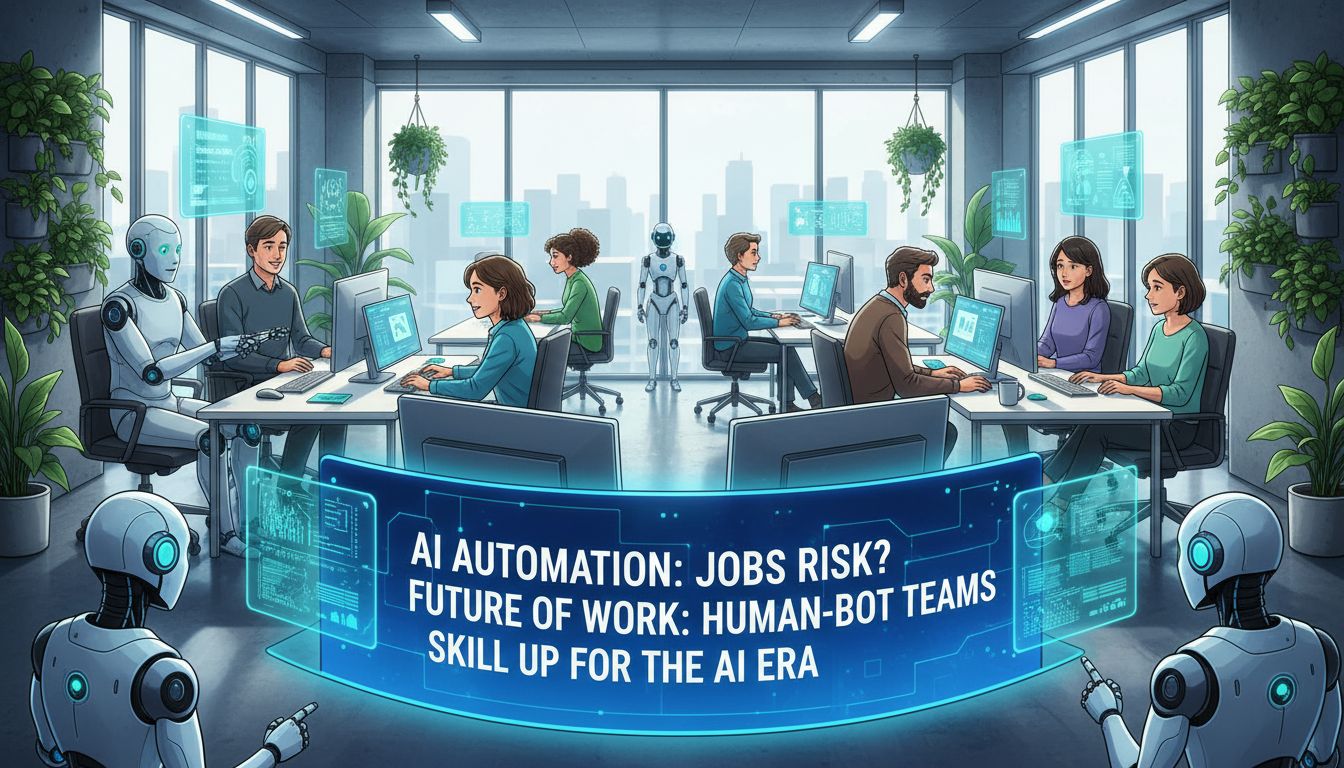Foundation Models AI is transforming the landscape of artificial intelligence by providing a versatile and robust framework for various applications. These large language models are revolutionizing natural language processing, computer science, and numerous industries through their adaptability and unprecedented capabilities. In this blog post, we will delve into the intricacies of foundation models in AI and explore how they have emerged as indispensable tools.
We’ll discuss the emergence of skills from size and depth in these models, as well as their applications across various industries. Furthermore, we will examine some surprising properties of Foundation Models AI that enable it to be applied to tasks such as drug discovery and protein folding predictions.
In addition to highlighting its strengths, we’ll also address biases inherent within these systems by recognizing them early on during model development stages while implementing ethical considerations throughout. Lastly, we’ll touch upon restricting access to prevent misuse while balancing accessibility with safety precautions so that researchers can continue advancing generative AI technology without compromising security or ethics.
Table of Contents:
- Foundation Models in AI
- Surprising Properties and Adaptability
- Restricting Access to Prevent Misuse
- Enhancing Productivity through AI Integration
- FAQs in Relation to Foundation Models Ai
- Conclusion
Foundation Models in AI
The world of artificial intelligence (AI) has been dominated by deep learning techniques for over a decade, and the latest advancement in this field comes in the form of foundation models. These innovative models possess unique creative capabilities that enable them to complete tasks such as finishing sentences or generating hundreds of lines of computer code to solve problems.
Emergence of Skills from Size and Depth
A key aspect that sets foundation models apart is their ability to develop new skills based on their size and depth. As these models grow larger, they can learn more complex patterns and concepts from vast amounts of data. This allows them to perform better at various tasks without requiring specific fine-tuning for each one.
Applications Across Various Industries
The versatility offered by foundation models makes them an invaluable tool across numerous industries. For instance, they have shown promise in fields like natural language processing (NLP) where they can understand human language with remarkable accuracy. Moreover, these adaptable AI systems are being used for:
- Data analysis: Foundation models can sift through large datasets quickly and efficiently, identifying trends or anomalies that might be missed by humans.
- Creative content generation: From writing articles to composing music, these powerful tools can generate original content with minimal input from users.
- Predictive modeling: By analyzing historical data, foundation models can make accurate predictions about future events or outcomes – a valuable asset for businesses looking to stay ahead in competitive markets.
Foundation models are likely to be an essential factor in the development of tech and creativity going forward.
Foundation models in AI are a powerful means of unlocking the possibilities and potential of artificial intelligence as well as its applications. Surprising properties and adaptability can be explored further by leveraging these foundation models for drug discovery, protein folding predictions, and more.
Surprising Properties and Adaptability
The adaptability of foundation models in artificial intelligence allows them to be applied across numerous fields, making them an essential tool for advancing research in multiple disciplines. Their ability to develop new skills based on their size and depth is a testament to the potential impact these models can have on various industries.
Drug Discovery Applications
Recent advancements in AI-driven drug discovery showcase how foundation models can revolutionize the pharmaceutical industry. By analyzing vast amounts of data, these AI systems are capable of identifying potential drug candidates at an unprecedented speed, significantly reducing the time it takes for researchers to bring life-saving medications from lab bench to bedside.
Protein Folding Predictions
In addition to drug discovery applications, foundation models have also shown promise in predicting protein folding structures. The recent success of DeepMind’s AlphaFold system, which uses deep learning techniques similar to those employed by foundation models, demonstrates how AI can help scientists better understand complex biological processes such as protein folding – a key factor in many diseases including Alzheimer’s and Parkinson’s.
- Emergence of skills from size and depth: Foundation model capabilities grow with increased complexity; larger networks lead to more advanced skillsets that enable diverse problem-solving abilities.
- Broad applicability across industries: From healthcare and biotechnology sectors like drug discovery or protein folding predictions mentioned above, all the way through finance or even creative arts – there seems to be no limit when it comes to potential applications of foundation models.
As the world continues to embrace artificial intelligence, the adaptability and surprising properties of foundation models will undoubtedly play a significant role in shaping our future. By understanding their capabilities and potential applications, we can harness these powerful tools for positive change across various industries.
The surprising properties and adaptability of Foundation Models AI have opened up a range of possibilities for drug discovery applications and protein folding predictions. Addressing biases in AI systems is an important step to ensure ethical considerations are implemented, as well as recognizing any inherent bias that may be present.
Foundation models in artificial intelligence are highly adaptable and can be applied across multiple fields, making them a valuable tool for research. They have been used to revolutionize drug discovery by identifying potential candidates at an unprecedented speed and predicting protein folding structures, which is crucial in many diseases such as Alzheimer’s and Parkinson’s. These models’ surprising properties enable diverse problem-solving abilities, making them applicable across various industries from healthcare to finance or even creative arts.
Addressing Biases in AI Systems
As powerful as they may be, foundation models also raise concerns about perpetuating biases present within the data used during training. Ensuring these systems do not further entrench existing prejudices is crucial when developing ethical AI solutions.
Recognizing Inherent Biases
In order to address potential issues of bias, it’s essential to first recognize that foundation models are trained on vast amounts of data from various sources. This means that any biases or stereotypes present in this data can inadvertently become embedded into the model itself. For example, a recent study by Nature Machine Intelligence found that popular natural language processing (NLP) models tend to exhibit gender and racial biases.
Implementing Ethical Considerations
To mitigate these risks and develop more responsible AI systems, researchers must prioritize incorporating ethical considerations throughout the development process. Some strategies for achieving this include:
- Data selection: Carefully curating diverse datasets free from harmful stereotypes can help reduce inherent biases.
- Fairness metrics: Implementing fairness metrics such as demographic parity or equalized odds ensures algorithms treat different groups equitably.
- Bias audits: Regularly conducting bias audits allows developers to identify and rectify unintended consequences before deploying their AI system.
- User feedback: Encouraging user feedback enables continuous improvement while addressing real-world implications of biased algorithms.
In addition to these strategies, collaboration between industry professionals, ethicists, policymakers, and other stakeholders is vital for creating comprehensive guidelines and regulations to govern the ethical use of AI. For instance, organizations like Partnership on AI are working towards fostering a shared understanding of best practices in artificial intelligence.
It is essential to recognize and address biases in AI systems to ensure ethical use of the technology. To further protect against misuse, it is necessary to implement restrictions on access while maintaining accessibility for legitimate users.
Restricting Access to Prevent Misuse
As foundation models continue to grow in power and capability, it’s essential that we take the necessary precautions to prevent their misuse by malicious actors. To achieve this balance between accessibility and safety, access to some of the largest foundation models is restricted.
Security Measures Against Nefarious Purposes
OpenAI, for example, has implemented a tiered release strategy for its cutting-edge AI model CLIP. This approach allows researchers and developers controlled access while limiting potential harm from bad actors. Furthermore, organizations like OpenAI are actively seeking public input on topics such as system behavior and deployment policies in order to develop more robust security measures.
Balancing Accessibility with Safety Precautions
Maintaining an equilibrium between allowing widespread use of these powerful tools and ensuring they don’t fall into the wrong hands can be challenging. Here are some steps being taken:
- Vetting users: Requiring users who wish to access large-scale foundation models to undergo a thorough vetting process ensures only responsible parties have access.
- Licensing agreements: Implementing strict licensing agreements helps control how these technologies are used by third-party developers or companies.
- Auditing usage: Regularly monitoring how AI systems are utilized can help identify any instances where they may be misused or exploited for nefarious purposes.
- Promoting transparency: Encouraging open dialogue about both successes and failures within the AI community can lead to better understanding and more effective safety measures.
By implementing these strategies, we can ensure that foundation models remain focused on enhancing productivity while minimizing the potential negative consequences arising from their use. As artificial intelligence continues to advance, it’s crucial that we stay vigilant in addressing any risks associated with this powerful technology.
To safeguard the public, it is important to restrict access to AI technology. Moving on, integrating AI into everyday processes can help enhance productivity for businesses and consumers alike.
Enhancing Productivity through AI Integration
The integration of foundation models into various industries has the potential to significantly boost productivity and drive innovation. By automating tasks that previously required human intervention, these advanced AI systems can save time, reduce errors, and enable professionals to focus on more strategic activities.
Some key areas where foundation models are making a notable impact include:
- Drug discovery: Accelerating the process of identifying new drug candidates by predicting their efficacy and safety profiles.
- Protein folding predictions: Protein folding predictions are a valuable tool for researchers to gain insight into the intricate structures of proteins, which can potentially open up new possibilities in medicine and bioengineering.
- Natural language processing (NLP): Enhancing communication between humans and machines by enabling AI systems to better understand context, sentiment, and intent within text data.
- Code generation: Assisting developers in writing code faster with fewer errors by providing suggestions or even generating entire sections of code based on user input.
In addition to industry-specific applications, foundation models also have the potential to improve general business processes. For example:
- Automated customer support: Using AI-powered chatbots for handling routine inquiries efficiently while freeing up human agents for more complex issues.
FAQs in Relation to Foundation Models Ai
What are Foundation Models in AI?
Foundation models in AI are large-scale machine learning systems that can learn a wide range of skills from vast amounts of data. These models, such as OpenAI’s GPT-3 and Codex, demonstrate remarkable adaptability and can be fine-tuned for specific tasks across various industries, including natural language processing, computer vision, drug discovery, and protein folding predictions.
What is the Foundation in AI?
The term “foundation” in AI refers to the underlying structure or basis upon which advanced artificial intelligence systems are built. It typically involves developing general-purpose algorithms that can learn diverse skills through exposure to massive datasets. This approach enables the creation of highly adaptable and versatile AI models capable of tackling complex problems across multiple domains.
What are the Benefits of Foundation Models?
The benefits of foundation models include:
- Versatility: They can be adapted for numerous applications
- Ease-of-use: Fine-tuning allows customization without building new architectures
- Innovation acceleration: Rapid development due to transferable knowledge between tasks
- Cross-domain problem-solving: Ability to tackle challenges spanning different industries
Is DALL-E a Foundation Model?
Yes, DALL-E is indeed a foundation model developed by OpenAI. It utilizes deep learning techniques similar to those employed in other large-scale language models like GPT-3 but focuses on generating high-quality images from textual descriptions instead. This makes it an excellent example of how foundational approaches extend beyond text-based applications into areas like computer vision.
Conclusion
Foundation Models AI is an exciting and rapidly evolving field with applications across various industries. One of the most significant advantages of these models is their emergence of skills from size and depth, allowing for surprising properties and adaptability.
However, it’s essential to address biases in AI systems by recognizing inherent biases and implementing ethical considerations. Additionally, restricting access to prevent misuse through security measures against nefarious purposes while balancing accessibility with safety precautions can help enhance productivity through AI integration.






